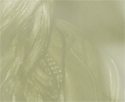Ruse, James (1759–1837) by B. H. Fletcher
This article was published in Australian Dictionary of Biography, Volume 2, (MUP), 1967
James Ruse (1759-1837), pioneer and smallholder, was born on 9 August 1759 at Launceston, Cornwall, England. At the Cornwall Assizes in 1782 he was convicted of burglarious breaking and entering; his capital sentence was changed to transportation to Africa for seven years. During the next five years while the government was searching for ways of solving the convict problem Ruse spent much of his time in the hulk Dunkirk at Plymouth.
When it was decided to establish a penal settlement in New South Wales he was sent out in the First Fleet in 1787 in the Scarborough. In July 1789 he claimed that his sentence had expired and soon afterwards he asked for a land grant, inspired by the desire to take up farming, an occupation to which he had been bred. Lacking evidence that Ruse was entitled to his freedom, Governor Arthur Phillip did not at once give him a grant, but in November permitted him to occupy an allotment near Parramatta, withholding the title until his capacity as a farmer and his right to freedom had been proved. The governor made this concession partly because he knew Ruse to be industrious and partly because he was anxious to discover how long it would take an emancipist to become self-sufficient.
Although not the first person to cultivate land in the colony on his own behalf, Ruse was the first ex-convict to seek a grant, for other emancipists displayed no inclination to take up agriculture. Undeterred by famine, drought and the depredations of convicts Ruse applied himself diligently to his task, helped by Phillip who provided him with provisions, clothing, seed, implements, livestock, a hut and assistance in clearing a small area of land. He proved not only a hard worker but also, by local standards, an enlightened farmer who made quite effective use of the limited means at his disposal. By February 1791 he was able to support both himself and his wife, Elizabeth Perry, a convict whom he had married on 5 September 1790. In April 1791 he received the title to his land, the first grant issued in New South Wales.
Besides justifying the faith placed in him Ruse had also scotched the belief held by many contemporaries that a smallholder could never maintain himself in New South Wales. This was not his only contribution to the expansion of private farming. He left Parramatta in despair at the quality of the land and in October 1793 sold his farm to Surgeon John Harris for £40. Having spent the proceeds, originally intended to pay his passage to England, he was obliged to seek a fresh grant and in January 1794 he became one of the twenty-two settlers responsible both for opening the Hawkesbury River area and for demonstrating its superiority as an agricultural centre over all other known regions. Why he chose a region hitherto regarded by many as unsuitable for farming is uncertain, but he made it his home for the next few years. At first he appears to have fared quite well and in June 1797 received the title to an additional forty-acre grant (16 ha); nine months later when poverty was acute among smallholders, he sold his original grant for £300, which suggests that it must have been well developed. Before 1800 he had bought an additional twenty acres (8 ha) but he mortgaged them in March 1801.
In 1797 he had been brought to court on charges of running a gambling school on his premises, but since no details of the trial are available, there can be no certainty that he engaged in a pastime enjoyed by many of his fellow settlers. In the next decade he still owned some land at the Hawkesbury, but his name appears on none of the available lists of settlers.
In 1806 his wife was recorded as farming fifteen acres (6 ha) at the Hawkesbury and she later signed the petitions extolling William Bligh, but of Ruse himself there was no mention. The only evidence of his presence was an agreement dated May 1801 apprenticing his son James as a mariner in the firm of Kable & Underwood. It has been suggested that he found employment on local vessels himself, for on several occasions the Sydney Gazette listed a James Ruse among the crew members of such ships, but these references were probably to his son.
In 1809 Ruse successfully requested a grant at Bankstown, for the recent Hawkesbury floods had caused him heavy losses. He retained contact with the Hawkesbury throughout the Macquarie period and in 1819 received a 100-acre (40 ha) grant at Riverstone. The muster of that year, however, showed him as owning only 45 acres (18 ha) in the Windsor district of which 20 (8 ha) were cleared and 19½ (7.9 ha) under crop.
In addition he owned 3 horses, 2 cows and 7 hogs. Subsequently his fortunes seem to have declined for in 1825 he was recorded as owning a mere ten acres (4 ha) of land, all in the Windsor district, and twelve hogs. Since this small property could scarcely have sustained him, it comes as no surprise to find that by 1828 he was working as an overseer for Captain Brooks at Lower Minto.
In 1834 he was living at Macquarie Fields. Two years later he was received into the Roman Catholic Church, though there is no evidence that his wife or seven children followed his example.
His death on 5 September 1837 brought to a close the career of one whose importance in New South Wales history has been unduly exaggerated and romanticized. Although his early achievements were noteworthy, he soon faded into the background and led an existence that scarcely distinguished him from many of his associates.




